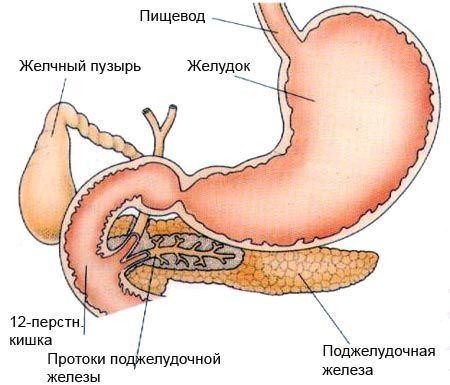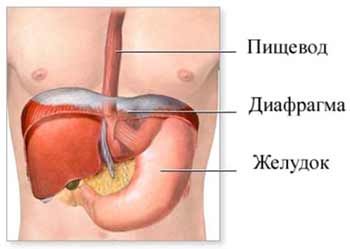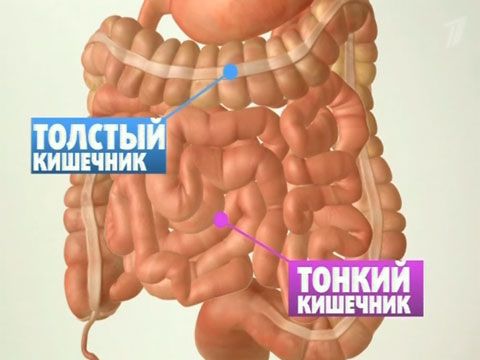
All iLive content is medically reviewed or fact checked to ensure as much factual accuracy as possible.
We have strict sourcing guidelines and only link to reputable media sites, academic research institutions and, whenever possible, medically peer reviewed studies. Note that the numbers in parentheses ([1], [2], etc.) are clickable links to these studies.
If you feel that any of our content is inaccurate, out-of-date, or otherwise questionable, please select it and press Ctrl + Enter.
Food processing by the gastrointestinal tract
Medical expert of the article
Last reviewed: 06.07.2025
Nutrition is a complex combination of processes inside our body. This is the processing of food, the process of its assimilation and absorption of nutrients, replenishment of energy, etc. All this happens when we simply eat food. Let's learn more about the structure of the gastrointestinal tract.
The process of processing and assimilation of food

The main processes of food processing occur as a result of digestion inside our digestive system. These are all organs whose role is mainly to process food chemically. The digestive system also promotes high-quality absorption of useful substances and stops the entry of harmful components of food, neutralizes and removes them.
The work of the gastrointestinal tract breaks down food into elementary (including chemical) compounds. This happens for the best absorption of food. The digestive tract works like a food processing machine and tirelessly grinds all the food consumed by a person, secretes juices for its processing and mixes, subjects it to chemical treatment, thanks to which the gastric juices cope with large quantities of food that you eat daily.
Sometimes it is very difficult for the reader to understand how the food you eat can support the functionality and vital activity of the entire organism, nourish it with useful substances. Now we will try to put everything in its place in a simple form of presentation and tell you about the physiological process of assimilation and processing of food by different parts of the digestive tract.
Oral cavity
The oral cavity also belongs to the gastrointestinal tract. Starting from the oral cavity, the food you eat begins to migrate through the body and be absorbed, processed. With the help of the tongue and teeth, the food is mixed and ground to a uniform consistency, then the salivary glands "attack", with the help of which saliva enters the oral cavity, it moistens the food.
With the help of salivary enzymes called amylase, the food begins to decompose. Then the person performs a complex reflex function - swallowing. Thanks to swallowing, food enters the esophagus.
If a person does not chew food well, it is still not ready for digestion. Food should be thoroughly chewed and crushed, if this is not the case, a person can get gastritis, constipation and suffer from other problems of the digestive tract.
Esophagus

The esophagus is a kind of corridor for the food lump to pass normally from the oral cavity to the stomach. The esophagus is a tube with walls that have several layers of muscle fibers.
Inside, this corridor consists of a mucous membrane, which has the useful property of significantly facilitating the passage of food through it. Thanks to the muscle fibers and mucous membrane, food also does not damage the walls of the esophagus. The esophagus tube can expand and contract when necessary for the food bolus to pass into the stomach. In this way, it pushes it through.
 [ 3 ]
[ 3 ]
Stomach
It is the stomach that grinds, crushes and helps digest food, the stomach performs the main processes for processing the food consumed. Thanks to the gastric juice, food is digested as efficiently as possible, and food is broken down into elementary chemical compounds.
Externally, the stomach looks like a bag that increases or decreases due to the functional elasticity of the walls of which it consists. The capacity of the stomach can be very large. The stomach holds about two kilograms of the food we eat. At the very end of the stomach there is a special valve called the sphincter. It prevents food waste from entering the duodenum prematurely.
The first layer of the stomach
The stomach has three main layers. The first layer is the inner layer, called the "mucosa" of the stomach. This first layer consists of gastric glands. The inside of the stomach wall is completely covered with epithelial cells. Both the epithelial cells and the stomach wall are very different in structure and perform completely different roles.
Some of them are capable of secreting hydrochloric acid with digestive enzymes that secrete gastric juice. Some of the other cells secrete a mucous substance that coats the stomach walls and protects them from damage.
The mucous membrane has a submucous base, a foundation. It is created as a kind of path, which is laid under the glands and epithelial cells. This base is penetrated by many, many small blood vessels, nerves, which make it possible to supply the stomach with blood, and nerve cells - to transmit the necessary impulses. For example, pain.
The second layer of the stomach
This second layer is the muscles. The stomach has them too. The stomach muscles are its thin lining. It is folded in two or even three layers, like puff pastry. The stomach lining helps grind food, making a mush out of it. Just like a mixer. Mixing with gastric juice, the food effectively dissolves and is then absorbed by the walls of the stomach.
The third layer of the stomach
And finally, the serous membrane of the stomach is its third layer. It is created in the form of a thin tissue that lines the abdominal cavity from the inside. And not only it, but also the internal organs, giving them the ability to be dynamic, active, mobile.
What happens in the stomach during digestion?
When food enters the stomach, it is moistened by gastric juice and helps it dissolve. What is gastric juice? It is a viscous and thick liquid, it is produced by the glands of the gastric mucosa. It is difficult to describe the composition of gastric juice, it contains many components. Its most important components are digestive enzymes and hydrochloric acid. Of course, hydrochloric acid is a rather poisonous and burning substance that can dissolve many products. Therefore, the walls of the stomach would dissolve due to the action of hydrochloric acid, if they were not protected by mucus. But digestive enzymes help the acid dissolve products more effectively. These are chemically active substances.
For example, rennin is able to make cottage cheese from milk. Lipase is a substance that breaks down fats. But these enzymes do not have many functions, but they perform them thoroughly. The enzyme pepsin is more active in the stomach - in composition, it complements hydrochloric acid, can break down proteins taken from plant and animal food in cooperation with it. As a result, simpler chemical compounds are obtained - amino acids and peptides.
When the stomach sphincter relaxes, the food, which is already ready for the next stage of processing, in the form of gruel, goes further, to the lower areas of the digestive tract. And then the remains of the products, which are called chyme, continue to be digested further, but already in the intestines.
Intestines

The work of the intestines is also quite intensive, and it is aimed at digesting and pushing food. The intestines perform quite a few roles, and therefore they are arranged as a complex natural structure. The intestines have several sections, determined anatomically. These are, first of all, its sections, such as the jejunum, cecum, duodenum, transverse, ascending, ileum, colon, sigmoid and finally the rectum. The anus is located in the lower section of the intestines. Fecal matter comes out through it.
How does the intestine work?
It, just like the stomach and esophagus, contracts and thus pushes food to its lower section, which ends in the anus. These intestinal contractions are called peristalsis. And doctors call the role of the intestine in pushing feces motor, in other words, it is intestinal motility. Have you heard of this term? Externally, the intestine looks like a pipeline through which food remains pass.
The intestines also have walls, like the stomach. And they also look like sheets laid on top of each other - muscle layers. This makes the intestinal walls elastic, flexible. These walls are the mucous membrane, serous and muscular layers.
When food passes through the intestines in the form of a liquid gruel, it is simultaneously broken down by intestinal juice into amino acids and other compounds that have a simple structure. In this form, food is easily absorbed by the elastic and strong walls of the intestines. These substances are carried through the blood and nourish the body with the necessary elements that provide energy.
Please note: food is digested and absorbed, and also passes into the anus in the form of feces through different parts of the intestine.
Duodenum
This very useful section of the intestine is almost 25 centimeters long. The duodenum plays a noble role – it controls the work of the stomach. The stomach is located next to it, which is very convenient for their interaction.
The duodenum regulates the secretion of hydrochloric acid from the stomach to process food and also controls its motor and excretory functions.
When there is too much hydrochloric acid (increased acidity), it becomes dangerous for the condition of the gastric mucosa - it can begin to self-digest, which is also quite painful. Therefore, the duodenum stops this process (the secretion of acid by the stomach), transmitting a corresponding signal through the receptors. At the same time, the lower sections of the intestine receive a command that now the food will begin to move towards them - down from the stomach.
Bile also comes from the duodenum to break down food, which facilitates the digestion process. Then all elements of food can be digested - fats, carbohydrates, and proteins.
 [ 4 ]
[ 4 ]
Small intestine
It is very long – from 4 meters to 7 meters. The small intestine follows, like a girlfriend, the duodenum. The small intestine includes two more sections of the intestine – the ileum and the jejunum. They play important roles in the digestion process. When food reaches these sections of the intestine, the food is chemically processed there by various chemical agents, and then begins to be absorbed by the intestinal walls. In particular, those substances that are useful for the body are absorbed.
Details of the small intestine
In these areas of the intestine - the ileum and jejunum - food is absorbed in a very original way - not by the walls, but next to them. This process of absorption is called parietal. This role is performed by special agents - enterocytes. This is the name of the cells of the mucous membrane, which belongs to the small intestine. These cells are capable of secreting substances that perfectly perform the role of breaking down glucose, amino acids and fatty acids, which make up food.
And then the mucous membrane immediately absorbs these processed substances. But they are absorbed into different parts of the body. Blood absorbs glucose and amino acids, and capillaries absorb fatty acids. And then these food elements in liquid form move further - to the liver.
The small intestine is so important for the body that its removal during surgery leads to a fatal outcome. The same cannot be said about the stomach, after the removal of part of which a person continues to live.
Colon
What is not digested in the small intestine goes further into the large intestine. This section of the intestine is called so because it is really thick compared to other sections of the intestine – some of its sections have a diameter of up to 7 centimeters. The large intestine is also quite large in length – 1-1.5 meters. The role of the large intestine is quite prosaic, but very useful for the whole organism. This section of the intestine is designed to create masses of feces from undigested parts of food and push them down to the anus.
The mucous membrane of the colon secretes special goblet cells that have the ability to secrete mucus. It helps feces pass through the colon better and easier and protects its walls from damage and wounds. The colon makes it possible to remove harmful toxins from the body and enrich the blood with water.
With the help of bacteria in the large intestine, food is further processed, now special bacteria are also involved in this process. These are intestinal bacteria, designed specifically to process food with the help of enzymes they secrete.
These are E. coli, lactobacilli, which are so familiar to us from yoghurt advertising, and also bifidobacteria. The more diverse the intestinal microflora, the healthier it will be and the better it will be able to perform its functions. If you destroy the intestinal microflora with the help of dysbacteriosis or anti-inflammatory agents, various antibiotics, the process of digestion and assimilation of food will go much worse.
This condition is called dysbacteriosis because most of the beneficial bacteria are destroyed. Then fungi and microbes prevail in the intestines, and was this the goal of healthy food processing?
 [ 7 ]
[ 7 ]

